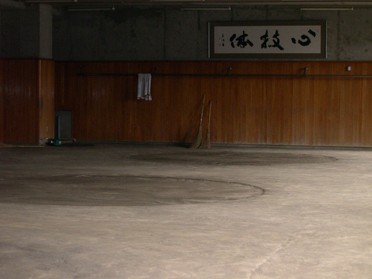| Brothers in Sumo – part one Brian Lewin |
 |
NHK & the Ozumo
English Broadcast
Mark Buckton
A visit to NHK, years of watching the show and the opinions of our Ed-in-Chief
Hanging With the Rikishi
Barbara Ann Klein
Barbara Ann Klein recounts her experiences with the “boys” in a pictorial diary series
| Rikishi of Old Joe Kuroda |
 |
Sumo Exhibit at the
Edo-Tokyo Museum
Barbara Ann Klein
SFM’s Editor takes in the exhibit celebrating 80 years of the Japan Sumo Association at this famous Tokyo museum
| Heya Peek John Gunning |
 |
| SFM Interview Dave Wiggins sits down |
 |
Photo Bonanza
What a collection – All-Japan Sumo Tournament, Hakkaku-
beya visit and sumo exhibits at the Edo-Tokyo Museum
Kyushu Basho Review
Lon Howard
Lon gives us his Kyushu Basho summary, along with the henka sightings results, and his take on the year in brief
Lower Division Rikishi
Mikko Mattila
Mikko Mattila covers lower division ups and downs
| Hatsu Basho Forecast Pierre Wohlleben & Mark Buckton |
 |
Sumo 101
Eric Blair
Eric explains all you need to know and then some about the Kokugikan building – the mecca of sumo
| Kimarite Focus Mikko Mattila |
 |
Minusha
John McTague
John’s unique bimonthly view of news from outside the dohyo
Online Gaming
Eric Blair
For the lowdown on Guess the Kotomitsuki – baby of SFM’s John Gunning
Kokugi Connections
Todd Lambert
Todd’s bimonthly focus on 3 of the most interesting sumo sites today
| Fan Debate Intra heya bouts – |
 |
SFM Cartoons
Stephen Thompson
In the second of our cartoon bonanzas, sit back and enjoy ST’s offerings
Let’s Hear From You
What was it that made you a sumo fan? American Todd Defoe tells all
Readers’ Letters
See what SFM readers had to say since our last issue
Sumo Quiz
The Quizmaster
Answer the Qs and win yourself next basho’s banzuke.
Continuing ’round the corridor, immediately to the rear of the building but still connected architecturally, will be noticed the Sumo School and practice dohyo area to the rear – if entered. Accessed via steep stairs, it is also the facility turned into a makeshift restaurant during honbasho, as bowls of chanko can be purchased for 200 yen a pop. Nothing special in and of itself, the pictures of oyakata on the wall of the classroom can be interesting for longer-term fans – especially as all the pictures seem rather dated.
A full rotation almost completed, numerous shops

Practice dohyo area to the rear of the Sumo School
Full walkabout all but behind you, a quick venture back into the main entrance hall and a look over towards the escalator taking fans up to the west side of the arena (marked with a 西, will bring into sight a rather unassuming door – the door to
Next Home
